SME Study 2024: An analysis of the latest figures
For the latest Swiss SME study, which is already the 10th edition of this study series, the latest figures from the Federal Statistical Office (FSO) for 2021 were evaluated and compared with previous years.

It is not large companies with 250 or more employees that dominate the Swiss corporate landscape, but small and medium-sized enterprises (SMEs): according to the latest provisional figures from the Federal Statistical Office, 99.7 % of companies in Switzerland are SMEs. Micro-enterprises with fewer than ten employees are the most common form of SME, accounting for almost 90 % of companies. The two other forms of SMEs, namely small and medium-sized enterprises, together account for only around one in ten companies in Switzerland: 8.4 % of companies are small enterprises with 10 to 49 employees, and only 1.5 % of companies are medium-sized enterprises with 50 to 249 employees (FSO, 2023a).
A look at the employment figures shows that around two thirds of employees in Switzerland - measured in full-time equivalents (FTEs) - work in SMEs. The employees are distributed roughly equally among the different company sizes in SMEs: 22.6 % of employees work in micro-enterprises (< 10 MA), 21.6 % in small enterprises (10 - 49 MA) and 20.9 % in medium-sized enterprises (50 - 249 MA).
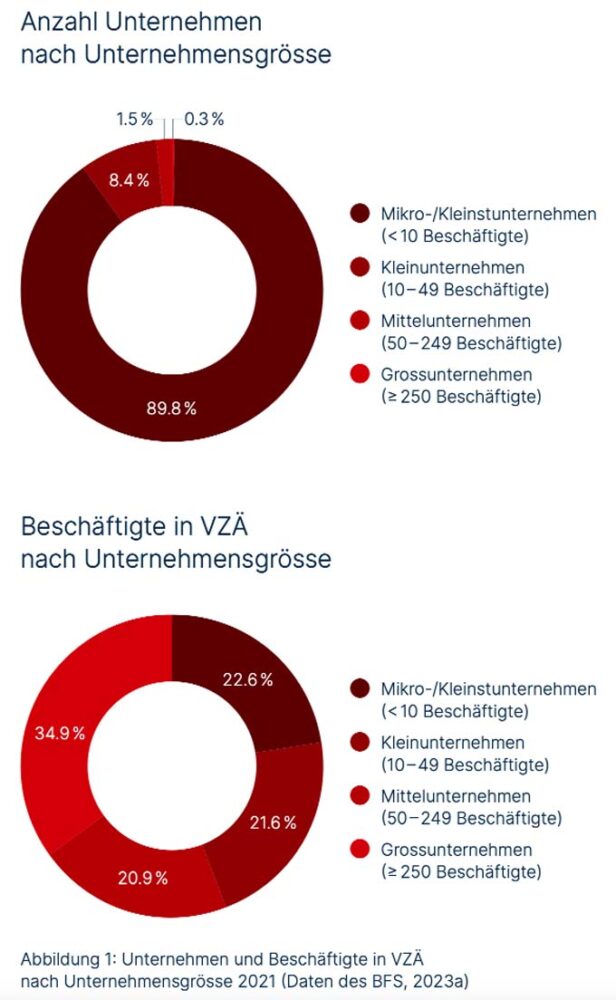
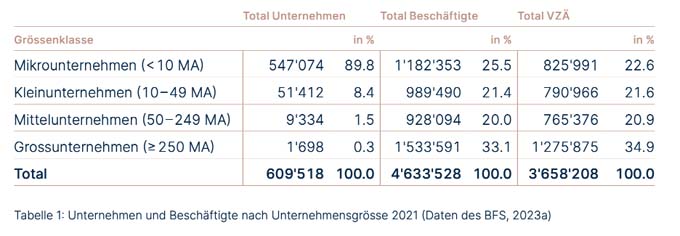
Micro-enterprises are not equally dominant in all sectors. A comparison of the various sectors reveals the following picture: In the first sector - the agricultural sector - there are mainly micro-enterprises. They make up 98.0 % of the companies. In the third sector - the service sector - micro-enterprises are also very dominant with 90.7 % of companies. And even in the second sector, the industrial sector, they account for 80.6 % of companies.
The sectors differ greatly in terms of the number of employees: in the first sector, almost all people work in SMEs (99.7 %), and 84.8 % are employed in micro-enterprises. In the second sector, on the other hand, 67.6 % of employees work in SMEs. At 15.8 %, less than a fifth of employees work in micro-enterprises. In the third sector, 62.8 % of employees work in SMEs, which is the lowest percentage compared to the other sectors. However, the share of micro-enterprises is again higher than that of employees in the industrial sector: 22.8 % of employees in the service sector work in micro-enterprises.
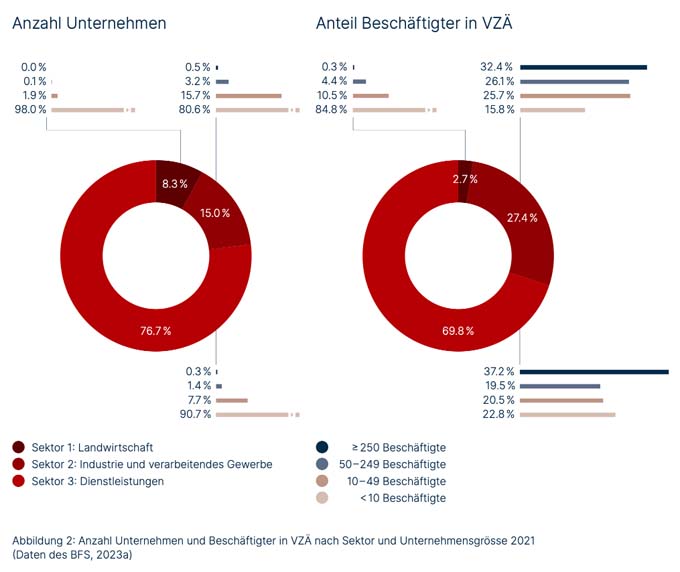
There are major differences within the cantons in terms of the distribution of employees across sectors. While the canton of Basel-Stadt has an above-average number of employees working in large companies in the industrial and service sectors, the cantons of Appenzell Innerrhoden and Ausserrhoden present a different and very diverse picture: most employees here work in SMEs, and in all sectors.
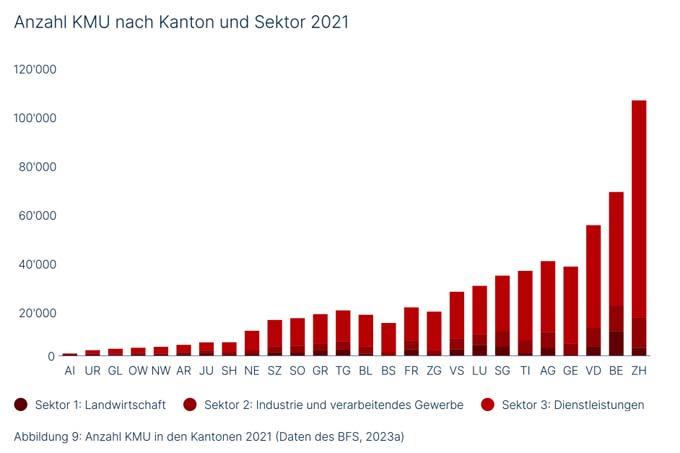
There are also major differences between sectors, especially when comparing the average size of companies and the structure of SMEs within a sector. The size ranges from 1.1 employees in FTE per company in the "Artistic activities" sector (musicians, self-employed visual artists, self-employed journalists, etc.) to 282 employees per company in the tobacco processing sector. The following sectors, among others, have a high number of micro-enterprises:
- Real Estate
- Legal and tax consulting, auditing, management consulting
- Healthcare
- Other freelance activities
- artistic activities
- Provision of other services
- Agriculture
In these sectors, micro-enterprises account for more than 90 % of companies. In contrast, only 16.3 % and 9.1 % of employees (in FTEs) in the pharmaceutical industry and postal services work in SMEs.
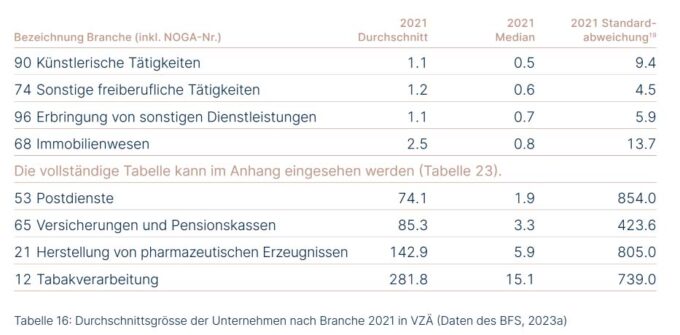
In terms of legal forms, it is noticeable that most SMEs are organized as sole proprietorships. In agriculture in particular, almost 80 % of SMEs are individual companies. SMEs in industry and services are often organized as AGs or GmbHs. As the size of the company increases, the number of sole proprietorships and limited liability companies tends to decrease.
(Excerpt from the study, year of publication 2024)









